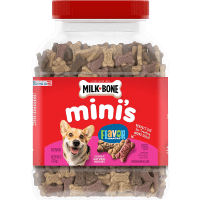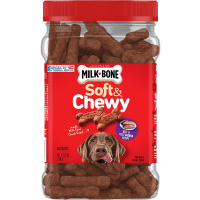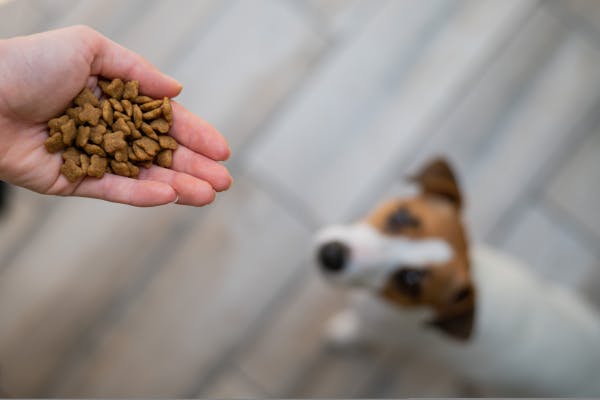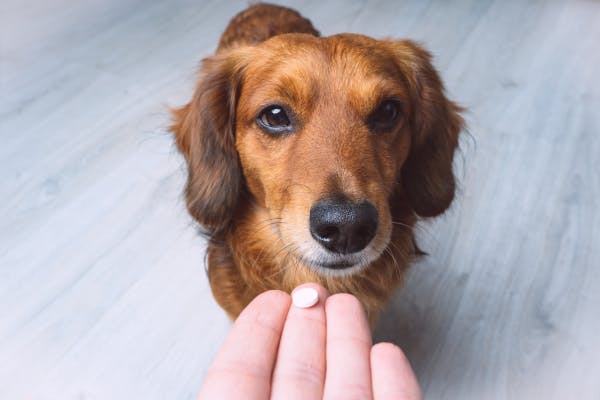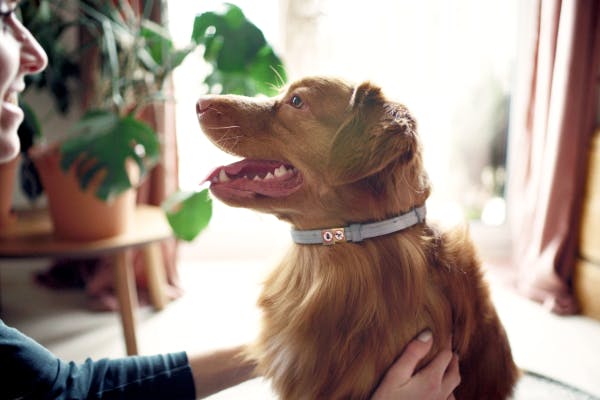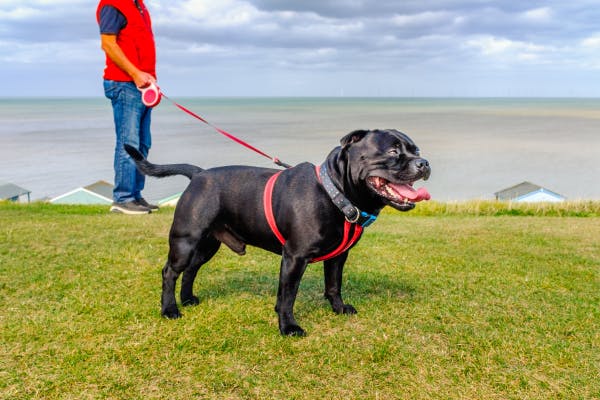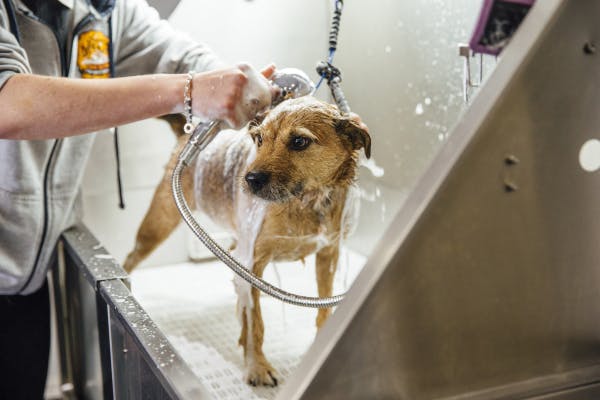learn about dog training treats
How to Keep Your Dog Motivated During Training Sessions
To keep your dog motivated during training sessions, understand their unique preferences, use appropriate treats, and employ various motivators like toys and attention. Timing, consistency, and patience are crucial for successful training.

Training your dog can be a rewarding experience for both you and your furry friend. Understanding your dog's unique preferences and motivators is essential for successful training sessions. By using appropriate treats, toys, and attention, you can encourage good behavior and build a strong bond with your pet.
- Understanding Your Dog's Motivation
- Proper Use of Treats During Training
- Avoiding Bribery and Ensuring Reinforcement in Dog Training
- Non-Food Motivators for Training Sessions
- Training Techniques for Non-Food Motivated Dogs
- Managing Your Dog's Weight with Treats
- Encouraging Long-term Motivation and Consistency
Understanding Your Dog's Motivation
Knowing what motivates a dog is crucial for successful training and building a strong bond. Each dog is unique and has its own favorite rewards. By figuring out what a dog likes, it becomes easier to encourage good behavior and train more effectively.
Before starting training, it is essential to find the perfect treat for the pet. There are many types of dog treats, but not all may be suitable for every furry friend. Choose a treat that the dog really enjoys and is the right size so they don't lose interest. Also, find a treat bag that's easy to use during training without distracting the pet.
For successful training sessions, follow these tips:
Keep sessions short and use small treats.
Hold the treat so the dog can see it.
Hand-feed treats to maintain a connection with the pet.
Use different motivators like toys and attention.
Dogs are motivated by treats, toys, and attention. While treats are popular, using them too much can make a dog only want to obey when food is involved. Toys can help teach basic behaviors, while attention can include praise or playtime.
Timing and consistency matter when training with motivators. Dogs have short attention spans, so give rewards right away for them to understand why they're being rewarded. Be consistent by using the same cues and repeating the same behavior.
Sometimes dogs don't respond well to food-based motivators due to stress, being overweight, breed preferences, or not being hungry. In these cases, try using praise, toys, or attention instead. Mixing up rewards can keep training interesting and engaging.
Proper Use of Treats During Training
Fading out treats during dog training is a key step in ensuring that learned behaviors can be performed without depending on food rewards. This process, called fading, requires careful planning and the right timing. Here are some tips on how to fade treats the right way:
Know when your dog is ready for fading
Before starting to fade, make sure the dog has really learned a specific behavior, meaning they respond to the cue at least 90% of the time in different places and situations. Once the dog shows the desired behavior consistently, it's possible to start cutting down on treats.
Start using a changing reward schedule
When moving from giving rewards all the time to sometimes, it's necessary to change the schedule carefully. Give rewards at random times instead. The goal is to reward often enough to keep the dog interested while also giving fewer treats overall.
Expect more from performance
As fading begins, ask for longer stays, quicker recalls, and better overall performance following commands. Slowly raise the bar so the dog keeps improving their skills.
Use everyday life
Besides food, dogs enjoy many things like praise, toys, and playtime. Use these to encourage good behavior and create new ways of positive reinforcement.
Take it slow
Patience is important when fading treats. If the frequency is reduced too fast, the dog might become confused or upset and stop performing the desired behavior. Instead, go slowly by reducing the number of treats over several days or weeks.
Always use some treats
It's essential not to forget that a learned behavior still needs some kind of reward or reinforcement. Even though treats may be reduced significantly, it's important to keep using them sometimes, especially when the dog does really well or faces tough distractions.
best dog training treats
- our rating98 out of 100
- our rating98 out of 100
- our rating96 out of 100
Avoiding Bribery and Ensuring Reinforcement in Dog Training
Avoiding bribery and using reinforcement in dog training promotes good behavior and strengthens the bond between the dog and its owner. It is helpful to understand the differences between bribery and reinforcement, as well as employing the right techniques.
Understanding Bribery and Reinforcement
Bribery occurs before the desired behavior, while reinforcement comes after it. When a dog is bribed, they receive a reward before performing the requested action. This might not encourage them to repeat the behavior later. However, with reinforcement, the dog is rewarded after displaying the desired behavior, making them more likely to do it again.
Using Reinforcement Techniques
Be consistent: Consistency is crucial when reinforcing good behavior. Always reward the same behavior when it occurs. Inconsistency may confuse the dog.
Choose good rewards: Use rewards that the dog enjoys and are healthy for them.
Reward at the right time: Give the dog their reward immediately after they show the desired behavior so they can associate it with their action.
Gradually reduce rewards: When a dog masters a certain behavior, start giving rewards less frequently for that action but still occasionally provide treats to maintain interest.
Encourage other good behaviors: Distract the dog from bad behaviors by focusing on positive alternatives instead.
Combine praise with treats: In addition to treats, use kind words to let the dog know they did well, which can help strengthen your bond even further.
Non-Food Motivators for Training Sessions
Training dogs that aren't motivated by food can be challenging but still successful using motivators like affection or playtime instead of food.
Dogs That Love Affection
When training an affectionate pet, use attention as a reward such as petting or kind words whenever they follow commands correctly without overstimulating them. Make sure to signal when the session is over.
Dogs That Enjoy Play
For playful pets, toys can serve as a reward during training. Teach the dog to "leave it" so you can easily retrieve the toy between tries. Reward them with a quick game or by throwing the toy after they follow commands properly and only provide access to these rewards during training.
Training Techniques for Non-Food Motivated Dogs
There are other motivators for dogs that don't respond well to food:
Environmental rewards: Let the dog access their favorite place or object after successfully completing a command, like sitting before opening the door.
Social rewards: Some dogs enjoy being around other pets and people, so use playtime or socializing as a reward for good behavior.
New experiences: Many dogs get excited about new toys or activities, which can also serve as rewards during training sessions.
Patience and consistency are essential when working with non-food motivated dogs. By discovering what motivates your pet and adjusting your training style accordingly, you'll be able to foster success in obedience while building a lasting bond with your canine companion. Remember that even if some dogs aren't interested in food rewards due to various reasons like stress or dislike of treats being offered, alternative methods can still effectively train these pets using different motivators and techniques.
Managing Your Dog's Weight with Treats
Keeping an eye on the number of treats given to your dog is crucial to prevent obesity and nutrient imbalances. Here are some tips to help maintain a balanced diet for your dog while using treats as rewards during training.
The 10% Rule of Dog Treats
Treats should constitute no more than 10% of your dog's daily calorie intake. For instance, if your dog requires 400 calories per day, only 40 calories should come from treats, with the remaining 360 from their regular food. Being mindful of treat quantity can help prevent overfeeding and maintain a healthy weight for your dog.
Choosing the Right Treats
Select low-calorie treats with nutritional value for your dog. Opt for natural and organic ingredients, avoiding artificial colors, flavors, or preservatives. Consider using your dog's kibble as a treat since it typically has fewer calories than store-bought treats.
Monitoring Treats During Training
It is essential to track the number of treats given to your dog during training sessions. To avoid overfeeding, consider breaking treats into smaller pieces or using kibble as rewards. This allows you to reward your dog multiple times without providing too many extra calories.
Other Rewards
Incorporate other forms of positive reinforcement in your training sessions besides food-based rewards. Praise, petting, and playtime can all serve as excellent motivational tools for encouraging good behavior without contributing to weight gain.
Exercise and Activity
Ensuring that your dog gets enough exercise is crucial for maintaining a healthy weight alongside monitoring treat intake. Regular walks, playtime, and other physical activities help keep them active while burning off any extra calories consumed through treats.
Consulting Your Veterinarian
If you have concerns about your dog's weight or the number of treats given during training, consult with your veterinarian for personalized advice. They can recommend suitable treat options and help create a balanced diet plan that meets your dog's nutritional needs.
Encouraging Long-term Motivation and Consistency
Maintaining motivation and consistency in training is vital for teaching good behavior and nurturing a well-behaved, obedient dog. Here are several ways to support motivation and consistency during training.
Create a Routine
Establishing a regular training schedule benefits both the dog and owner by keeping them focused on the training process. Training sessions at set times of the day or week let the dog know what to expect, making it easier for them to learn new behaviors. A routine also enables the owner to track progress and make adjustments as needed.
Set Realistic Goals
Tailoring attainable goals to the dog's age, breed, personality, and experience level is essential when training a dog. Breaking down tasks into smaller steps allows dogs to learn gradually while building skills over time. This approach also helps owners see progress while adjusting goals as their dogs improve.
Explore Different Training Methods
Trying different training methods keeps both dogs and owners engaged in learning together. Employ varying techniques based on how each individual dog learns best, making training more enjoyable and effective overall. For example, some dogs might prefer clicker-based methods while others respond better to physical cues or spoken praise.
Reward Frequently
Frequent rewards are crucial for maintaining high canine motivation levels. Rewarding good behavior with treats, praise, or playtime encourages dogs to repeat these actions in future instances of positive reinforcement. Always remember to reward immediately after any desired behavior occurs so that they understand why they're being rewarded.
Monitor Progress
Tracking progress throughout ongoing obedience activities is motivating for both trainers and pets. Seeing improvements in behavioral patterns inspires trainers to continue developing their strategies while celebrating successes with their pets.
Include Others
Involving family members and other caretakers in regular training sessions ensures consistency, providing motivation across the board. Having everyone be aware of goals and methods allows for clear communication cues and reinforcement opportunities, leading to better learning experiences overall. Sharing success stories and challenges with one another creates an atmosphere that encourages continued support during these essential training periods.
